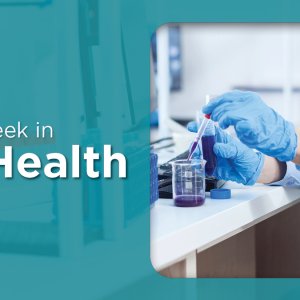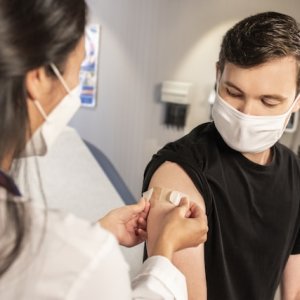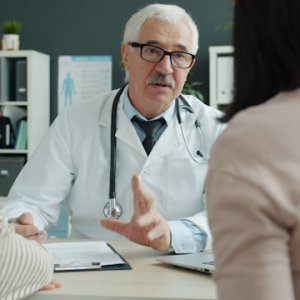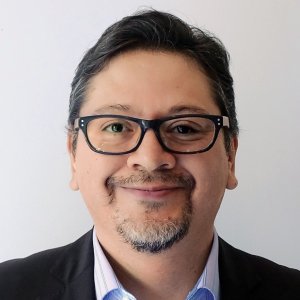Mexico City to Integrate Tech at Different Levels of Care

STORY INLINE POST
Q: The Coordination of Liaison and Academic Projects is of recent creation. What motivated the Ministry of Health of Mexico City (SEDESA) to create this office?
A: The Liaison and Academic Projects Area was born during the COVID-19 pandemic to link the public and private health sectors’ response to the pandemic and monitor hospital occupation. We were also in charge of creating the hospital reconversion model care for COVID-19 patients and reconverting to their original purpose when the worst peaks passed.
Our academic area mainly focuses on training our medical staff on the new national projects arriving in the city. Additionally, we are constantly training our medical staff for the prevention and attention of the most common diseases so they can provide the best diagnosis and treatment.
SEDESA oversees a network of 34 hospitals that focus on a variety of specialties, from pediatrics to toxicology. Of these, only the Legaria Pediatric Hospital and the Specialty Hospital Dr. Belisario Domínguez are third-level hospitals, specializing in neurosurgery and neurology and in hemodynamics and the hemodialysis clinic respectively.
Q: How is coordination helping SEDESA resume its provision of medical care for other diseases after the pandemic?
A: As the country’s capital, Mexico City played a key role during the COVID-19 pandemic. As the outbreak slows down, we are resuming other important projects for the city. For example, we are resuming the Salud en tu Vida (Health in your Life) program, which, among other goals, diagnoses and monitors pregnant patients with gestational diabetes. For this program, directors of obstetrics and gynecology, heads of nursing and nutritional staff at our hospitals participated in a three-week training program that used a manual created by the Salvador Zubirán National Institute of Health Sciences and Nutrition (INCMNSZ) and the Ministry of Education, Sciences, Technology and Innovation from Mexico City (SECTEI).
We are also developing indicators to measure the success rate of Salud en tu Vida and to know the main outcomes of our targeted patients. SEDESA has successfully been using LOCATEL, a health call center, as well as mobile and fixed telephony services during the pandemic to reach out to patients to ensure treatment adherence, we will still be using this tool as they show a great result.
Q: What are the main results to date of SEDESA’s telemedicine project with the Inter-American Development Bank (IADB)?
A: This project began 1.5 years ago to diagnose the maturity of 115 units among first and second-care level institutions to later implement telemedicine services. The project also lays the groundwork for generating smart hospitals within our network. One of the main objectives of the project is to strengthen the use of the electronic clinical record (ECR), which is the basis for a good telemedicine practice. Without the ECR, the information exchange would be poor for telemedicine. The ECR will later allow us to use new platforms and many other projects.
The project is focusing on remote hospitals, such as the Topilejo Hospital, located in the south of Mexico City. In this hospital, we have limited resources for every specialty, so using telemedicine patients can have teleassistance with our network of specialists. So patients do not move from one hospital to another. To do so, we will train a certain number of specialists; the goal is not to have all specialties available at once but to begin with the most urgent ones. To begin the integration, we carried out an intensive study of the hospital’s areas of opportunity. One was the ECR, which we are improving so it can connect with the telemedicine project.
We use the statistics generated by each hospital to identify necessary improvements. To determine a project’s success, we made a survey of each area of the hospital to analyze the staff’s perception and adoption of tech. Through these means, we found that some hospitals were already using certain telemedicine platforms and even had processes for each specialty.
Q: How does the coordination determine what projects are adequate to the population’s needs?
A: We are an attractive institution due to the size of Mexico City’s population. For that reason, academic institutions and companies often reach out to us to collaborate. We will soon begin a project with a pharmaceutical company to detect lung cancer and another to diagnose cardio-renal diseases in hypertensive and diabetic patients. We also have another project to monitor patients with asthma or chronic obstructive pulmonary disease (EPOC). This project uses IA tech to detect patterns and allow for a more accurate diagnosis of those patients.
We are also inviting and integrating academia into existing or new projects. As a newly created coordination, this is an area yet to be explored but we have some projects already in mind. For example, in La Pastora Hospital, we would like to introduce virtual surgery rooms for students and other activities with medical simulators that would allow the hospital to provide continuous education to medical professionals. This hospital is still fully focused on COVID-19, which has delayed this project.
Q: What collaborations do you have with the federal Ministry of Health?
A: We had one project with the INCMNSZ where we studied the effects of Remdesivir in patients with COVID-19, in which we found it had positive results regarding hospital stay and oxygen consumption. Other national institutes participated in this study, allowing us to also study the effectiveness of Baricitinib.
The Ministry of Health of Mexico City seeks to guarantee the right to health for the city’s 9.2 million inhabitants, including the 4.2 million who lack social security.








 By Miriam Bello | Senior Journalist and Industry Analyst -
Mon, 07/11/2022 - 14:05
By Miriam Bello | Senior Journalist and Industry Analyst -
Mon, 07/11/2022 - 14:05
















